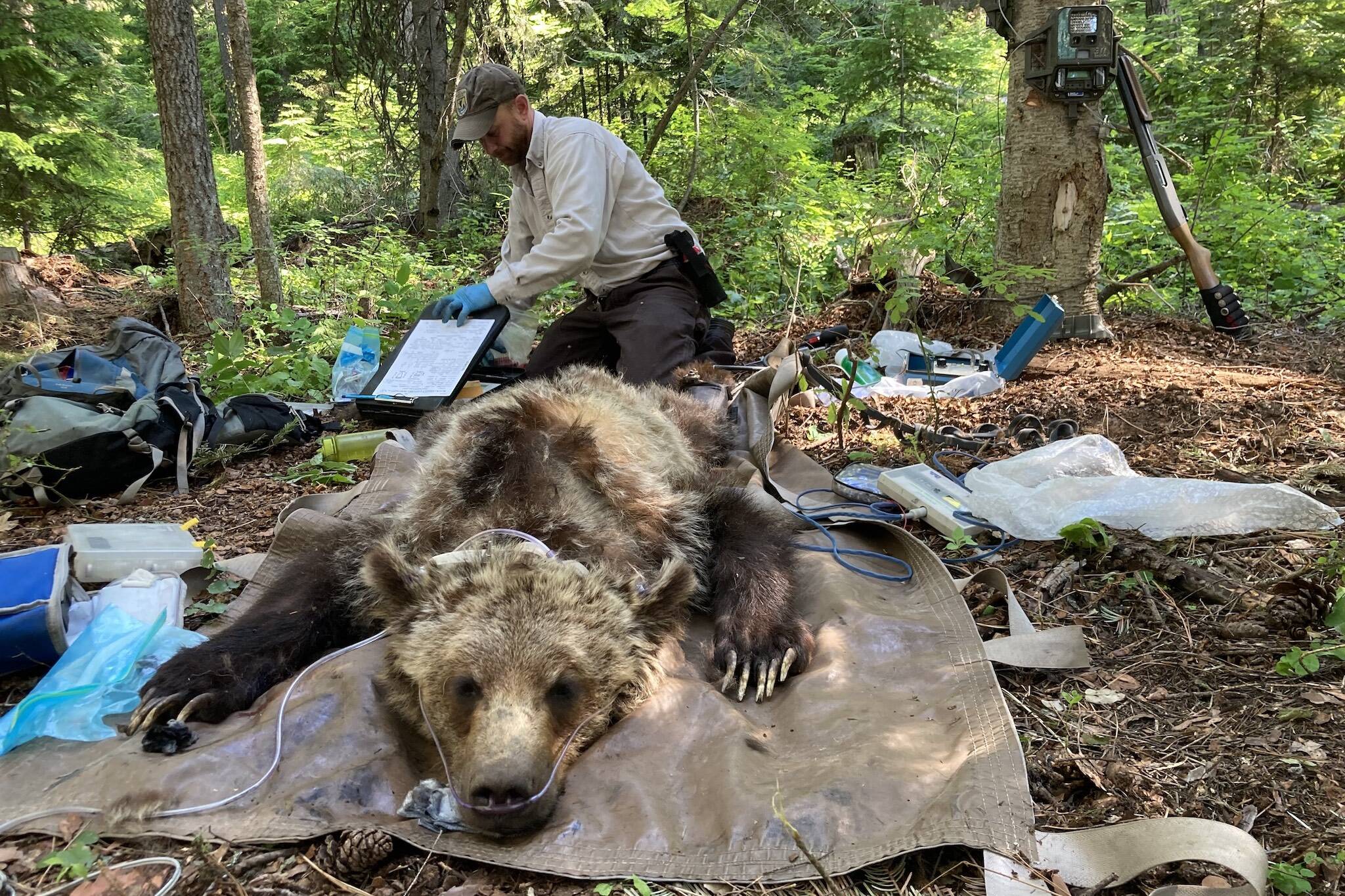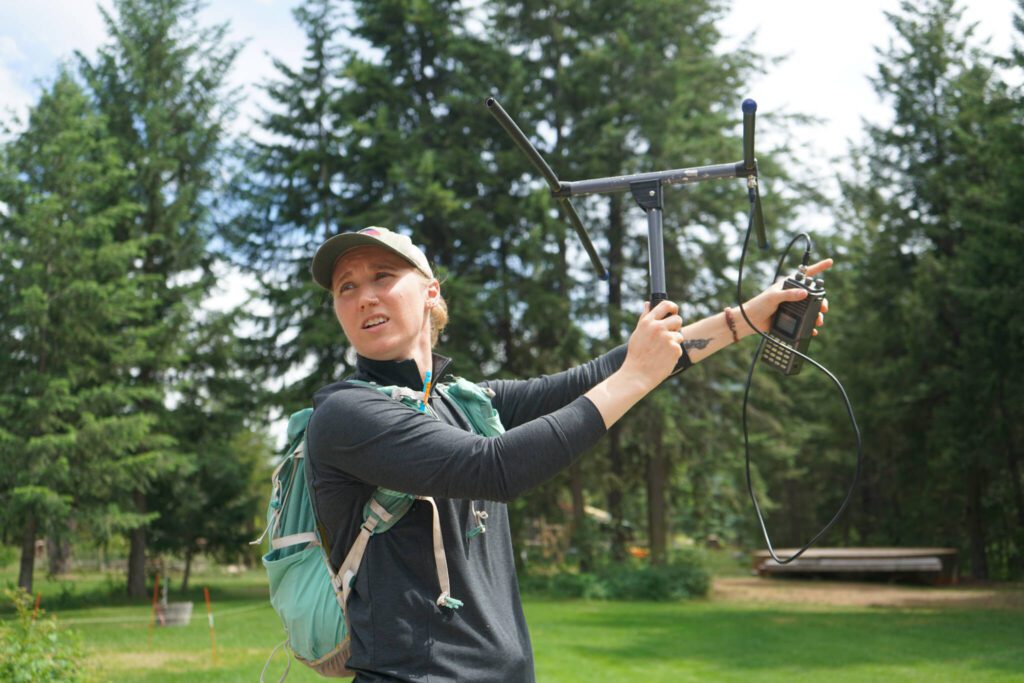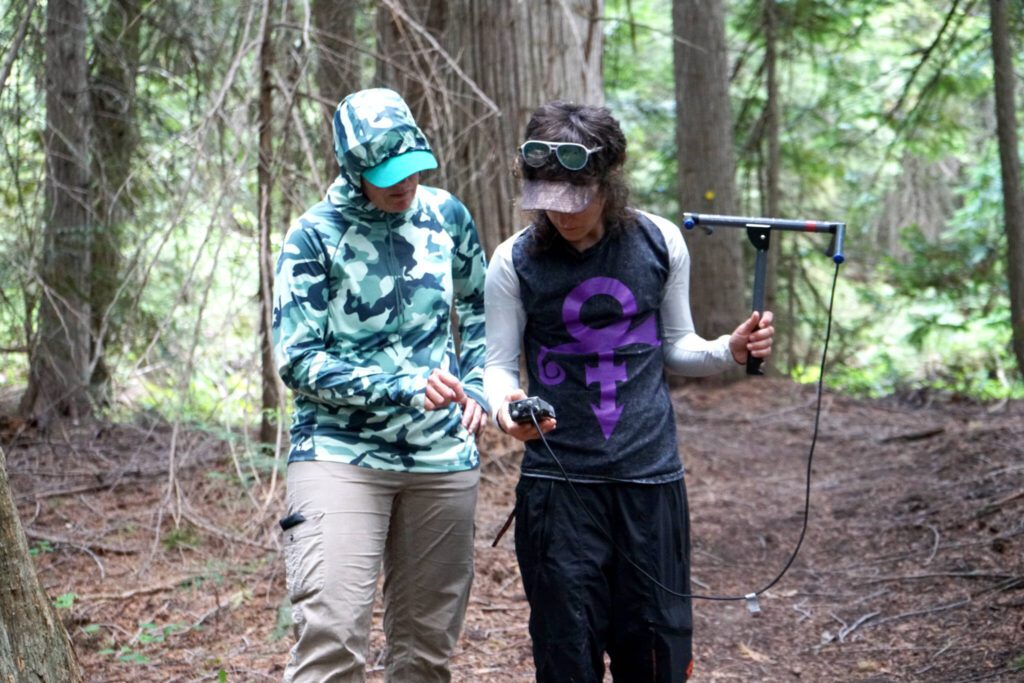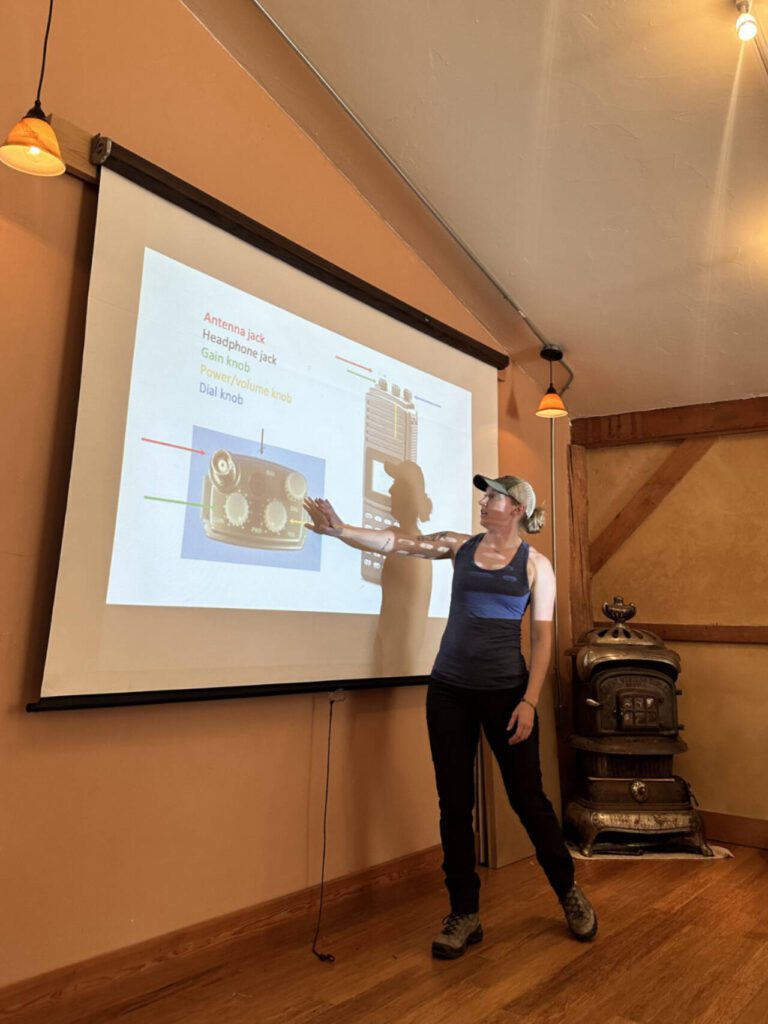MARBLEMOUNT — It’s not that much different from the collar that you put on your dog, said Wayne Kasworm, a U.S. Fish and Wildlife biologist.
“You put a collar on your dog, and maybe your dog is kind of nervous about it for starters, but they kind of come to accept it pretty readily,” he said. “And I think that’s similar with a bear as well. They do come to accept it and they go off and live their life accordingly.”
Radio collars, also referred to as GPS collars, will play a key role as federal agencies move forward with a controversial plan to reintroduce grizzly bears to the North Cascades.
Already, similar tracking has revealed dismal results for mountain goats airlifted from the Olympics to the Cascades.
Grizzly experts don’t believe the apex predators are as fragile when it comes to translocation — but time will tell, with the help of collar data. In the coming years, biologists will equip each translocated bear with the tracking devices, showing GPS coordinates with a two-day delay, as they traverse alpine meadows and ancient forests where thousands of grizzlies used to roam.
Rangers will capture bears using culvert traps, sedate them, then attach collars around their necks. The devices can notify biologists if the animal dies. A researcher can detach the collar remotely, or set an expiration date for detachment. They’re designed to fall off after three or four years.
Using the data, staff with the National Park Service and the U.S. Fish and Wildlife Service hope to find out how the bears will adapt to their new ecosystem: their habitats, diets and travel patterns, like which pockets of wilderness the bears choose to forage.
So who are the guinea pigs?
Grizzly bears moved to the North Cascades will likely be between 2 and 6 years old, Kasworm said.
“It does appear that younger bears are more likely to stay where you put them than older bears,” he said.
Older grizzly bears have spent years familiarizing themselves with their home range, making them more likely to try to return there.
“But younger bears,” Kasworm said, “are more adaptable to a new home range.”
‘Power management’
Currently, Kasworm monitors about 13 grizzly bears with radio collars. Four or five roam the Selkirk Mountains, spanning northeastern Washington, northern Idaho and British Columbia.
The others wander through the Cabinet-Yaak Mountains in northeast Idaho and northwest Montana, where Kasworm and other biologists have witnessed the grizzly population rebound.
An estimated 15 grizzly bears lived in the Cabinet-Yaak ecosystem before relocation efforts started in the 1990s. Now, as the reintroduced grizzly bears reproduce, the population has grown to over 60.
Wildlife experts have often used radio telemetry — technology that uses radio signals to determine location — to measure survival rates. From 2018 to 2020, the state Department of Fish and Wildlife, as well as the Stillaguamish and Tulalip tribes, attached collars to mountain goats moved from the Olympics to the North Cascades. These devices notified biologists that almost all of the translocated goats, along with many goats native to the Cascades, died within five years.
And in April, federal agencies finalized a decision to collar grizzlies from British Columbia, Montana or Wyoming and transport them to the North Cascades, where biologists have considered them extinct for decades. By monitoring the reintroduced grizzlies, biologists can measure the success of an ambitious wildlife project that was decades in the making.
Federal staff will release three to seven bears in northern Washington every year, until they reach a population of 25. After a decade, the agencies expect to release 11 more bears, hoping to reach 200 in a century.
It’s unclear when the first sloth of grizzlies will be released into the North Cascades wilderness. The collars will monitor them from early spring to late fall every year. (Bears hibernate in winter.)
Federal staff may periodically recapture North Cascades grizzlies to maintain a collared sample of the population, according to the final Grizzly Bear Restoration Plan. However, staff won’t re-collar all translocated bears once their initial collars fall off.
Biologists may struggle to recapture grizzlies, Kasworm noted. He and his colleagues sometimes ride horses or mountain bikes to reach remote backcountry where bears roam.
Both the Park Service and Fish and Wildlife will post updates online every week about the bears’ movements, though not exact locations.
The collars are designed to transmit data about every two days through a satellite phone system. But Kasworm doesn’t always receive a bear’s coordinates when he expects to.
Just like cellphones need good reception, a collar needs a reliable signal. Collars struggle to connect to satellites sometimes if a bear is trekking through rugged terrain or under dense tree canopy.
If the collar can’t find a signal, it will try again every four hours. The collar stores the bear’s coordinates, then submits the information once the device is within satellite range. The battery life drains every time the collar tries to find a signal.
“The whole collar system,” Kasworm said, “is based on power management.”
If a collar’s detachment device fails, there’s a cotton spacer that deteriorates over time due to weather and animal behavior, ensuring it falls off, Kasworm said. Biologists can also use the cotton spacer to loosen the collar, especially if they expect the bear will continue growing, he said.
Experts don’t believe the collars harm the bears.
‘What was the cause?’
Collars can send “mortality signals,” too. Wildlife experts usually program the collars to alert them if the animal is motionless for hours.
“We can use that telemetry to go check on if the bear is dead,” Kasworm said. “Can we detect why it is dead? What was the cause of mortality? And furthermore, is there something that management can do to reduce unnecessary types of mortality?”
Radio collars used by U.S. Fish and Wildlife cost around $3,000.
Once one falls off, biologists often recover and reuse the collar another time or two, Kasworm said. He travels into grizzly territory using an antenna, in search of radio signals. From there, he can send the recovered collar back to the manufacturer, where staff rebuild and refurbish the devices at a lesser cost than a new one.
Once he has the collar back, Kasworm can connect it to a computer and download its data, even if its signal went dead.
“Radio collars are not perfect,” Kasworm said. “There are bears that are able to pull them off and pitch them off. We do our best in terms of fitting it — the company tries to provide us a solid piece of technology. But I’ve got a couple of collars out there that have quit broadcasting up through the Iridium (satellite) system. I know the bear is still alive and carrying those collars because I can get the signal on the ground, but it’s not sending it off.”
In the Cabinet Mountains, Kasworm and other biologists have also monitored grizzlies using more old fashioned technology: strands of barbed wire strung among trees with an odorous brush pile at its center, known as hair snag corrals. Bears drawn to the scent leave tufts of hair on the wiring as they investigate. Biologists may also use this method to monitor reintroduced grizzlies in the North Cascades, according to the restoration plan.
“It’s far easier to catch hair off of a bear,” Kasworm said, “than it is to catch a bear.”
‘They can make this work’
Since 2022, staff with the nonprofit Home Range Wildlife Research have used radio collars to monitor Canada lynx in the North Cascades.
Considered an endangered species in Washington, the state Department of Fish and Wildlife estimated 87 Canada lynx lived in the North Cascades in the early 2000s.
Now, experts believe the population has dwindled to under 50.
As of this month, staff were monitoring five lynx with radio collars, said Anna Machowicz, education director and co-founder of Home Range. Researchers have seen evidence the lynx are reproducing.
Staff at Home Range want to learn how lynx interact with habitat ravaged by wildfires. With this insight, researchers at the nonprofit can advise federal and state agencies on how to create more resilient forests — and that advice could protect lynx displaced by wildfires in the future.
To the surprise of staff, lynx have been living in heavily burned areas.
“That’s been really interesting to just see: OK, they can make this work,” Machowicz said.
Biologists at Home Range and federal wildlife agencies strive for collars to weigh about 3% of an average animal’s body weight — a standard grizzly experts adhere to as well.
Machowicz said, “We really don’t want to make collecting data a burden on these animals.”
Ta’Leah Van Sistine: 425-339-3460; taleah.vansistine@heraldnet.com; Twitter: @TaLeahRoseV.
Talk to us
> Give us your news tips.
> Send us a letter to the editor.
> More Herald contact information.
































